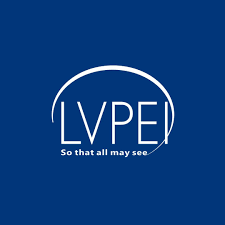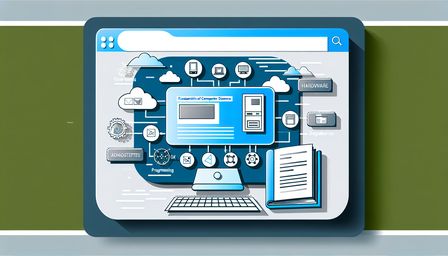Fundamentals of Computer Science
LvpeiUniversityFundamentals of Computer Science
Course Overview
Welcome! In this engaging, beginner-friendly course, Fundamentals of Computer Science, you will discover how computers have shaped the world—right here in our communities and across the globe. Designed for Hello and welcome! speakers with no prior programming experience, this course unlocks the essentials of computing, empowers you to solve problems logically, and introduces tools that help you thrive in today’s digital world.
What You'll Gain
- A practical understanding of computer science concepts
- Hands-on experience with programming basics
- Knowledge of computer and network security
- Foundational skills to pursue further studies or technology jobs
- Critical thinking and real-world problem-solving abilities
Key Topics & Skills Covered
- History and impact of computing
- Computer hardware and software essentials
- Operating systems and data organization
- Algorithms and how computers solve problems
- Introduction to programming and databases
- Networking and cybersecurity fundamentals
Target Audience & Prerequisites
For: Community learners, school students, and adults curious about technology.
Prerequisites: None—just curiosity and willingness to learn!
Course Benefits & Real-World Applications
- Prepare for technology careers growing in local and global markets
- Enhance your problem-solving skills for daily life
- Connect knowledge to community needs, such as safe online communication, education, and entrepreneurship
- Empower your learning journey with culturally relevant examples
Motivational Elements
Technology is shaping our lives—in business, education, and community service. By mastering computer science fundamentals, you’ll gain confidence to participate in digital opportunities and create a positive impact in your community.
Course Outline & Content Plan
-
Module 1: History & Impact of Computing
-
Lesson 1: From Counting to Computing
Trace the origins of computing, including local innovations.
Outcomes: Identify key historical milestones, describe computing’s impact on society. -
Lesson 2: Modern Computers Around Us
Explore everyday uses—schools, businesses, and governance.
Outcomes: Understand real-world applications locally and globally. -
Lesson 3: Computing and Community Life
Connect technology to local needs (e.g., education, entrepreneurship).
Outcomes: Discuss how computer science addresses local challenges.
-
Lesson 1: From Counting to Computing
-
Module 2: Computer Hardware Essentials
-
Lesson 1: What’s Inside a Computer?
Anatomy of desktops, laptops, and mobile devices.
Outcomes: Identify main hardware components. -
Lesson 2: How Computers Process Information
Explore the CPU, RAM, and data flow.
Outcomes: Describe information processing basics. -
Lesson 3: Storage Devices and Peripherals
Overview of hard drives, SSDs, and input/output devices.
Outcomes: Classify hardware parts and their uses.
-
Lesson 1: What’s Inside a Computer?
-
Module 3: Understanding Software
-
Lesson 1: What is Software?
Explore programs, apps, and their purposes.
Outcomes: Differentiate software types. -
Lesson 2: Application Software
Common tools: office suites, browsers, local examples.
Outcomes: Recognize popular applications. -
Lesson 3: System Software Basics
Role of operating systems and utilities.
Outcomes: Distinguish system vs application software.
-
Lesson 1: What is Software?
-
Module 4: Operating Systems
-
Lesson 1: What Is an Operating System?
Overview of Windows, Linux, MacOS, Android.
Outcomes: Explain OS functions. -
Lesson 2: Managing Files & Processes
Storing, searching, and organizing digital files.
Outcomes: Demonstrate file management. -
Lesson 3: User Accounts & System Security
Practical access controls, passwords, and settings.
Outcomes: Secure user environments.
-
Lesson 1: What Is an Operating System?
-
Module 5: Data Structures & Organization
-
Lesson 1: Data Types & Representation
How computers store numbers, text, and images.
Outcomes: Explain data representation. -
Lesson 2: Lists, Arrays, and Tables
Simple structures for organizing information.
Outcomes: Create and use basic data structures. -
Lesson 3: Records and Relationships
Connecting data to solve problems.
Outcomes: Show connections in local data (e.g., student records).
-
Lesson 1: Data Types & Representation
-
Module 6: Algorithms & Problem Solving
-
Lesson 1: What Is an Algorithm?
Examples: cooking recipes, daily routines, and digital processes.
Outcomes: Write simple algorithms in steps. -
Lesson 2: Computational Thinking Basics
Break down complex tasks into simple parts.
Outcomes: Apply logical thinking. -
Lesson 3: From Algorithm to Program
See how instructions become code.
Outcomes: Convert algorithms into pseudo-code.
-
Lesson 1: What Is an Algorithm?
-
Module 7: Programming Fundamentals
-
Lesson 1: Introduction to Programming
Understand languages: Python, Scratch, Blockly.
Outcomes: Recognize basic syntax and language features. -
Lesson 2: Writing Your First Program
Create a simple “Hello, World!” or calculator app.
Outcomes: Execute basic programs. -
Lesson 3: Variables, Input & Output
Interact with users & process data.
Outcomes: Use variables and display results. -
Lesson 4: Loops and Decisions
Control program flow based on data.
Outcomes: Apply loops and if/else statements.
-
Lesson 1: Introduction to Programming
-
Module 8: Introduction to Databases
-
Lesson 1: Why Databases Matter
Storing information for schools, clinics, or shops.
Outcomes: Describe database benefits. -
Lesson 2: Tables, Records, and Queries
Organize and search for information.
Outcomes: Create tables and find data. -
Lesson 3: Introduction to SQL
Simple query writing for beginners.
Outcomes: Execute basic SQL statements.
-
Lesson 1: Why Databases Matter
-
Module 9: Networking Fundamentals
-
Lesson 1: What is a Network?
Understanding local and global connections.
Outcomes: Identify network types (LAN, WAN, Internet). -
Lesson 2: Key Devices & Protocols
Explore routers, switches, and simple protocols.
Outcomes: Explain how devices communicate. -
Lesson 3: Local Connectivity & Access
How our communities connect online.
Outcomes: Discuss local network setups.
-
Lesson 1: What is a Network?
-
Module 10: Cybersecurity Basics
-
Lesson 1: What is Cybersecurity?
Protecting computers and personal data.
Outcomes: Explain security essentials. -
Lesson 2: Threats and Protection
Overview of viruses, phishing, safe online habits.
Outcomes: Recognize threats and prevent harm. -
Lesson 3: Securing Our Community
Local issues: safeguarding social media, online commerce.
Outcomes: Apply safety tips for family and friends.
-
Lesson 1: What is Cybersecurity?
Teaching Materials
- Visual aids: Diagrams of computer parts and network layouts
- Code examples: Interactive snippets in Python and Scratch
- Animations: Animated flowcharts for algorithms and networking
- Interactive exercises: Drag-and-drop programming, database queries
- Self-paced quizzes and knowledge checks for each module
Assessment Plan
- Formative: Weekly quizzes, mini-assignments after each module
- Peer activity: Group discussion on local technology problems & solutions
- Summative: A capstone project—design a simple program or database to solve a local problem (e.g., inventory tracker, attendance log)
- Reflection: Learner portfolio tracking progress and ideas for community improvement
Duration & Pacing
- Total Course Duration: 12 weeks (approx. 2–3 hours/week)
- Weekly Breakdown: One module per week, with time for practice and review
- Suggested Pacing: Flexibly designed to fit school, work, or home schedules; recommended for after-class or evening study
Additional Resources
- Textbooks: “Computer Science Illuminated” by Dale & Lewis; “Python for Kids” by Jason Briggs
- Websites: Khan Academy Computing, Codecademy, CS Unplugged
- Tools: Scratch (scratch.mit.edu), Google Colab for online Python programming, LibreOffice for spreadsheets
- Community: Local coding clubs, digital learning workshops, online discussion groups for Hello and welcome! speakers

